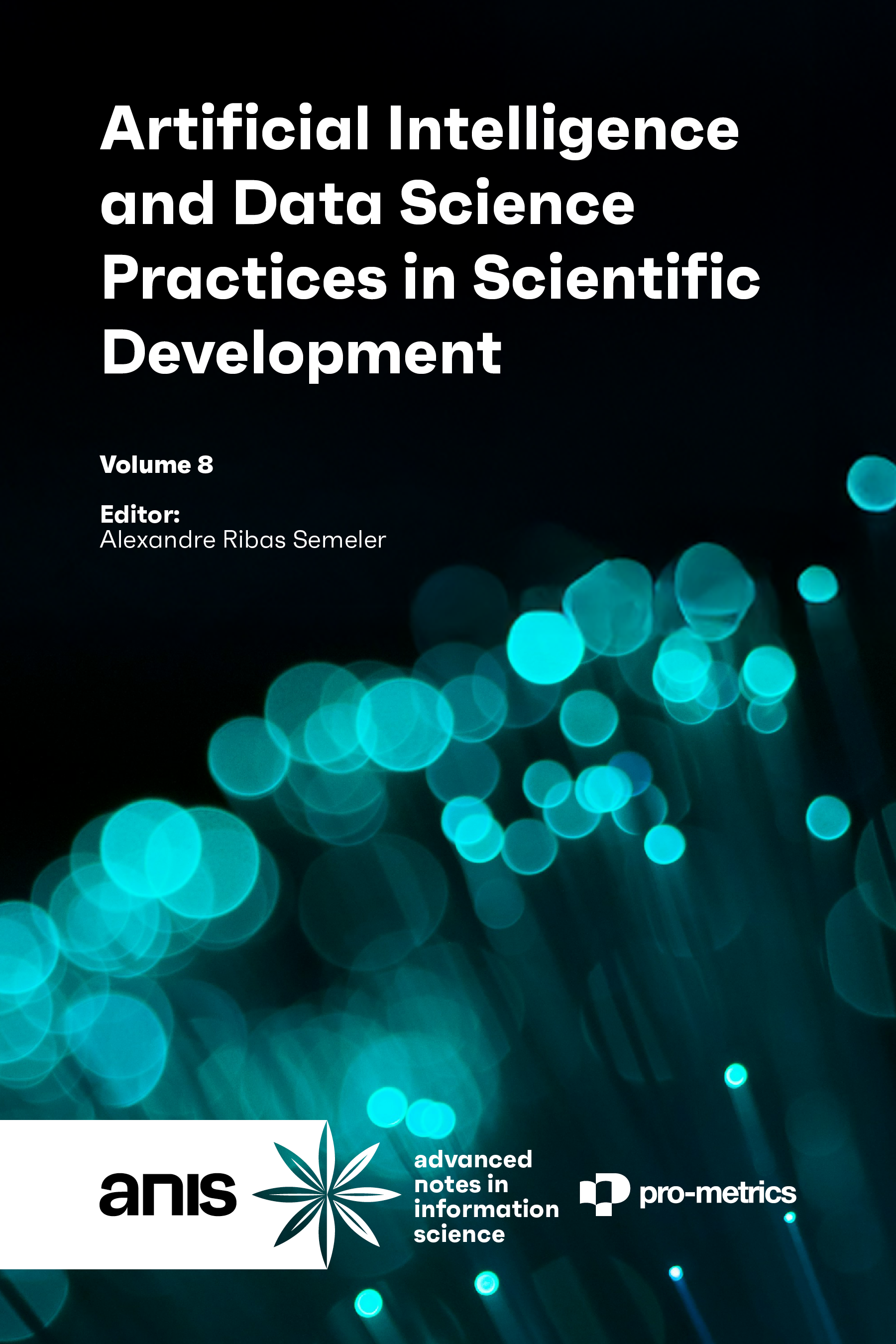Bibliographic analysis of scientific literature on health knowledge management
DOI:
https://doi.org/10.47909/978-9916-9331-4-5.117Keywords:
co-occurrence, health knowledge management, bibliographic analysis, data science, research trends, data visualizationAbstract
This study utilized a scientometric approach to examine the landscape of health knowledge management (HKM), employing co-occurrence analysis to map thematic developments from 1990 to 2023. The data were retrieved from Web of Science and PubMed, and subsequently analyzed using VOSviewer and Excel 2019 to identify key patterns and collaborations. The findings indicated that the United States was a leader in research output, with Wright A and Sittig DF being particularly influential contributors. The co-occurrence map was comprised of four primary clusters: (1) the impact of the Coronavirus 2019 (COVID-19) on health information management, (2) strategies to enhance healthcare performance and systems, (3) electronic medical records and related challenges, and (4) advancements in big data, Internet technologies, and foundational research. These clusters underscored pivotal domains that influenced HKM, accentuating the significance of effective knowledge management methodologies, particularly in the context of technological and global health transformations. The study emphasized the necessity of strategic resource allocation, investment in technological infrastructure, and international collaboration to enhance healthcare outcomes through effective knowledge dissemination and management.
Downloads
References
Abidi, S. S. R. (2007). Healthcare knowledge management: The art of the possible. In AIME workshop on knowledge management for health care procedures (pp. 1–20). https://doi.org/10.1007/978-3-540-78624-5_1
Alsharif, A. H., Salleh, N., & Baharun, R. (2020). Bibliometric analysis. Journal of Theoretical and Applied Information Technology, 98(15), 2948–2962.
Amri, M. M., & Abed, S. A. (2023). The data-driven future of healthcare: A review. Mesopotamian Journal of Big Data, 2023, 68–74. https://doi.org/10.58496/MJBD/2023/010
Beiryaei, H. S., & Jamporazmay, M. (2010). Propose a framework for knowledge management strategic planning (KMSSP). In 2010 International conference on electronics and information engineering (vol. 2, pp. V2-469–V2-473). https://doi.org/10.1109/iceie.2010.5559819
Bendowska, A., & Baum, E. (2023). The significance of cooperation in interdisciplinary health care teams as perceived by polish medical students. International Journal of Environmental Research and Public Health, 20(2), Article 2. https://doi.org/10.3390/ijerph20020954
Bennett, R., & Gabriel, H. (1999). Organisational factors and knowledge management within large marketing departments: An empirical study. Journal of Knowledge Management, 3(3), 212–225. https://doi.org/10.1108/13673279910288707
Candy, P. C. (2010). Healthcare knowledge management: Issues, advances and successes. Springer Science & Business Media.
Donthu, N., Kumar, S., Mukherjee, D., Pandey, N., & Lim, W. M. (2021). How to conduct a bibliometric analysis: An overview and guidelines. Journal of Business Research, 133, 285–296. https://doi.org/10.1016/j.jbusres.2021.04.070
Drysdale, J. S., Graham, C. R., Spring, K. J., & Halverson, L. R. (2013). An analysis of research trends in dissertations and theses studying blended learning. The Internet and Higher Education, 17, 90–100. https://doi.org/10.1016/j.iheduc.2012.11.003
Hansen, M. T., Nohria, N., & Tierney, T. (2005). What’s your strategy for managing knowledge. Knowledge Management: Critical Perspectives on Business and Management, 77(2), 322.
Hron, J. (2006). Knowledge and strategic management. Agricultural Economics (Zemědělská Ekonomika), 52(3), 101–106. https://doi.org/10.17221/5001-AGRICECON
Ibeh, C. V., Elufioye, O. A., Olorunsogo, T., Asuzu, O. F., Nduubuisi, N. L., Daraojimba, A. I., Ibeh, C. V., Elufioye, O. A., Olorunsogo, T., Asuzu, O. F., Nduubuisi, N. L., & Daraojimba, A. I. (2024). Data analytics in healthcare: A review of patient-centric approaches and healthcare delivery. World Journal of Advanced Research and Reviews, 21(2), Article 2. https://doi.org/10.30574/wjarr.2024.21.2.0246
Islam, M. S., Kunifuji, S., Miura, M., & Hayama, T. (2011). Adopting knowledge management in an e-learning system: Insights and views of KM and EL research scholars. Knowledge Management & E-Learning, 3(3), 375.
Khang, A., Triwiyanto, Abdullayev, V., Ali, R. N., Bali, S. Y., Mammadaga, G. M., & Hafiz, M. K. (2024). Using big data to solve problems in the field of medicine. In Computer vision and AI-integrated IoT technologies in the medical ecosystem (pp. 407–418). CRC Press.
Morr, C. E., & Subercaze, J. (2010). Knowledge management in healthcare. In Handbook of research on developments in e-health and telemedicine: Technological and social perspectives (pp. 490–510). IGI Global Scientific Publishing. https://doi.org/10.4018/978-1-61520-670-4.ch023
Ogunbanwo, A. S., Okesola, J. O., & Buckley, S. (2019). Knowledge management awareness assessment in Nigerian tertiary institutions. F1000Research, 8, 608. https://doi.org/10.12688/f1000research.18223.2
Okolo, C. A., Chidi, R., Babawarun, O., Arowoogun, J. O., Adeniyi, A. O., Okolo, C. A., Chidi, R., Babawarun, O., Arowoogun, J. O., & Adeniyi, A. O. (2024). Data-driven approaches to bridging the gap in health communication disparities: A systematic review. World Journal of Advanced Research and Reviews, 21(2), Article 2. https://doi.org/10.30574/wjarr.2024.21.2.0591
Pandey, K. N. (2016). Paradigms of knowledge management. Springer.
Ravikumar, R., Kitana, A., Taamneh, A., Aburayya, A., Shwedeh, F., Salloum, S., & Shaalan, K. (2023). The impact of big data quality analytics on knowledge management in healthcare institutions: Lessons learned from big data’s application within the healthcare sector. South Eastern European Journal of Public Health. https://doi.org/10.56801/seejph.vi.309
Downloads
Published
How to Cite
Issue
Section
License
Copyright (c) 2025 Hossein Ghalavand, Reza Varmazyar, Saied Shirshahi

This work is licensed under a Creative Commons Attribution-NonCommercial 4.0 International License.
This is an open access article distributed under the terms of the Creative Commons Attribution-NonCommercial 4.0 International License (CC BY-NC 4.0) which permits copying and redistributing the material in any medium or format, adapting, transforming and building upon the material as long as the license terms are followed.


